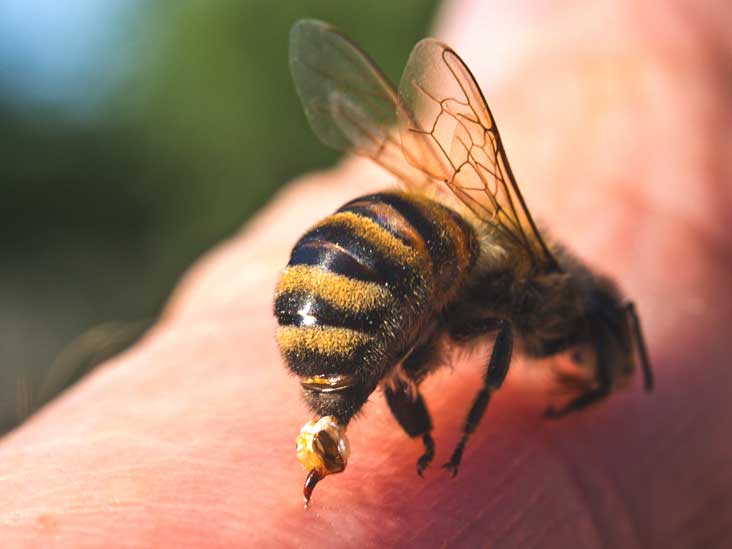

Long Term Treatment - The most effective form of prevention of anaphylaxis from bee, wasp or hornet venom is desensitisation (immunotherapy), which is very safe and aims to establish a long term immunity to bee or wasp venom, following a 3-4 year course of treatment.Ĭontact us if you have further questions or to make an appointment for a consultation. Immediate Treatment - For a severe reaction with generalised symptoms, we recommend the immediate use of an adrenaline injection (Epipen), attendance at an Accident & Emergency hospital department, where injectable antihistamines and steriods can be used while the person can be kept under observation. Stingers should be removed, and a cream or ointment can help relieve symptoms. Allergic reactions are uncommon but may be serious. If the stinger is present, remove it by gently scraping over the area.
#Hornet bee sting treatment skin#
Stings by bees, wasps, hornets, and ants usually cause pain, redness, swelling, and itching. Treatment Examine the area for the stinger that may be left in the skin by the insect. Swelling of the face, eyes, throat, hands or feetįor this you need to seek immediate medical attention. Treatment Stings by bees, wasps, and hornets are common throughout the United States.Take oral anti-histamines to reduce itching and swellingĪ serious reaction is called an anaphylatic reaction and may present serious, life-threatening symptoms such as:.If the swelling is a problem, apply an ice pack.Apply a cold pack to the site to reduce swelling and pain. Wash the area with soap and water, then apply an antiseptic cream Follow these steps: Wash the affected area with soap and water.Take an over-the-counter antihistamine to help. To avoid receiving more venom, remove the stinger as quickly as possible, using a credit card or back of a blunt knife to do so. Do not scratch or rub the skin where the sting or bite occurred.However, you may experience an allergic reaction, infection, or more serious symptoms. The usual reaction to a bee or wasp sting is pain, swelling and redness around the sting site.Ī large local reaction will result in swelling that spreads beyond the site, for instance, if you were stung on the hand the swelling may spread up your arm. Most hornet stings are mild and will cause minor symptoms. A severe reaction to bee venom is a well-document risk for bee-keepers. Reactions to bee and wasp venom is accumulative, i.e the more stings you receive the worse you could react, hence the risk to bee-keepers. Bee and wasp stings have increased in recent years due to the extensive use of perfumes and perfumed toiletries that attract all types of insects as well as the increased popularity of bee-keeping. The severity of the reaction to their venom varies from person to person.

Their stings can be extremely painful and unpleasant. Wasp, bee and hornet are the most common insects to trigger an allergic reaction. Urticaria - Hives, Anaphylaxis, Angio-oedema Swelling around the sting, difficulty breathing or swallowing, swelling of face, eyes, throat, wheezing, urticaria RELATED PROBLEMS


 0 kommentar(er)
0 kommentar(er)
